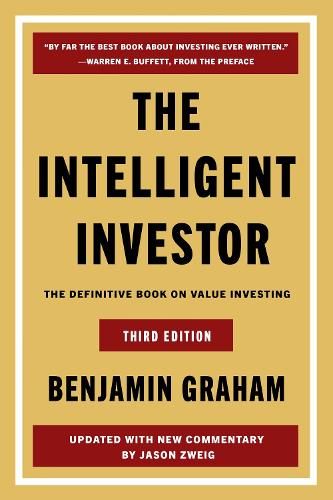Put together your investment plan: 6 things to know as a beginner
Have you ever wondered how to achieve your financial goals - whether it's a comfortable retirement, buying your dream home or exploring the world? Investing is one of the key tools that can help you grow your money and turn your dreams into reality.
In today's world, investment opportunities are wider than ever. From traditional stocks and bonds to cryptocurrencies and real estate, there's something for everyone. But before you dive into the world of investing, it's important to have a clear plan. This is where investment plan.
An investment plan is your personal roadmap to achieve your financial goals. It will help you:
- Define your goals: What are the dreams you want to realise through investing?
- Assess your tolerance for risk: How much risk are you willing to take to achieve your goals?
- Build a suitable investment portfolio: How do I split my money between different investment options?
- Monitor your investments: How can you make sure you are on track to achieve your goals?
In this article, we'll give you step-by-step instructions on how to set up a. investment plan for beginners. This is your first step towards financial freedom.

1. Setting goals: from dreams to reality
Before you start investing, it is important to clearly define what you want to achieve with your investments. Do you want to save for retirement, buy your own home, travel the world, or secure a better future for your children? Goals can be short or long-term.
Short-term objectives are what you want to achieve in the next 1-3 years. For example, buying a new car, planning a trip or organising a wedding. For short-term goals, lower-risk investments such as savings or bonds are suitable.
Long-term objectives are those that take longer to achieve, such as 5, 10 or even 30 years. These include, for example, saving for retirement, buying property or financing children's education. For longer-term goals, higher risk investments such as shares or real estate are better suited.
When setting targets, it is important to use SMART methodologyt. This means that your goals should be:
- Specific: The more precisely you define your purpose, the better. For example, "I want to save €10,000 for a trip to Thailand" is a better goal than just "I want to travel".
- Measurable: Your goal should be measurable so you can track your progress. For example, "I want to save €10,000" is a measurable goal, but "I want a lot of money" is not.
- Achievable: Your goal should be realistic and achievable. Don't set your goals too high, which can lead to disappointment.
- Realistic: Take into account your income and expenditure and set goals that are achievable.
- Time-limited: Set a time limit for your goals so you have the motivation to achieve them. For example, "I want to save €10,000 for a trip to Thailand in 2 years".
Once you have clearly defined your goals, it will be easier for you to choose the right investment opportunities and build your investment portfolio.
2. Risk assessment: how much are you prepared to lose?
Every investment carries a certain risk. This means that you may not always get the expected return on your investment. In some cases, you could even lose some of your money. Before investing, it is important to assess your risk tolerance and choose investments that match your risk level.
Risk levels of different investments:
- Low risk: Deposits, bonds, government bonds. These investments usually offer lower returns but are also lower risk.
- Medium risk: Index funds, ETFs, dividend stocks. These investments offer potentially higher returns than low-risk investments, but also carry a higher risk.
- High risk: Equities, cryptocurrencies, venture capital. These investments offer potentially very high returns, but they also carry a very high risk.
Personal risk tolerance assessment:
- Time: How long is your investment horizon? The longer the time horizon, the more risk you are willing to take.
- Financial status: How stable is your financial situation? If you have a stable income and enough savings, you're likely to be willing to take more risk.
- Personal preference: How comfortable are you with risk? Some people are naturally risk averse, while others prefer security.
Risk/return ratio:
As a general rule, the higher the risk, the higher the potential return. Therefore, if you are willing to take more risk, you can earn higher returns. However, you also need to be prepared for higher losses.
Tips:
- Don't invest money you need in the short term.
- Diversify your investments to reduce risk.
- Don't let emotions influence your investment decisions.
- If necessary, consult a financial adviser.
3. Building an investment portfolio: different paths to the goal
Now that you've set your goals and assessed your risk tolerance, it's time to start building your investment portfolio. It's like a cookbook for your investments, showing how to allocate your money between different asset classes. Think of it as a varied menu, with each dish serving a purpose.
Asset classes:
- Shares: Securities representing the ownership of companies. Equities carry a higher risk, but also a potentially higher return.
- Bonds: Loans you give to the state or a company. Bonds are generally lower risk than shares, but they also offer lower returns.
- Real estate: Land, buildings and other real estate assets. Real estate can offer stable returns and inflation protection, but it also carries liquidity risk.
- Toore: Oil, gold, silver, etc. Their price fluctuates according to market conditions.
- Alternative investments: Cryptocurrencies, works of art, collectibles. These are high-risk investments with potentially high returns.
The importance of diversification:
Don't put all your eggs in one basket! Diversification means spreading your investments across different asset classes. This helps reduce risk and protect your portfolio from market fluctuations. Think of it as weather-appropriate clothing - you need both an umbrella and sunglasses.
- Passive investing: Tracks market indices, for example by buying index funds, or ETF-e. It's a simple and inexpensive strategy that's perfect for beginners.
- Active investing: Tries to "beat" the market by buying and selling shares. This strategy requires more knowledge and time and is more suitable for experienced investors.
Portfolio tips:
- Take into account your objectives and risk tolerance.
- Split your investments between different asset classes.
- Choose investments you understand.
- Don't let emotions influence your decisions.
- Monitor your portfolio regularly and make changes if necessary.
Example:
A young investor with a long-term investment horizon and a high risk tolerance may choose a portfolio with a higher proportion invested in equities. An older investor with a shorter investment horizon and a lower risk tolerance may prefer a portfolio with a larger proportion invested in bonds.
4. Choosing an investment platform: where to invest your money?
When setting up your investment portfolio, it is important to find the right platform to manage your investments. Choosing the right platform can have a significant impact on your investment experience and performance. There is a wide range of different investment platforms available today, each with its own pros and cons.
Different investment platforms:
- Banks: Most banks offer investment services, which usually include deposits, bonds and investment funds. Banks offer convenience and security, but their fees may be higher than other platforms.
- Brokers: Brokers offer a wider range of investment options, including shares, bonds, funds and derivatives. Brokers often also offer investment advice, but their fees can also be high.
- Robo-advisors: Robo-advisors are automated platforms that provide investment advice and portfolio management using algorithms. Robo-advisors are usually cheaper than traditional financial advisors and are well suited to novice investors.
- Investment applications: Mobile apps that provide easy and convenient access to investing. Investment apps are well suited to beginners and often offer low fees.
What to consider when choosing a platform:
- Costs and fees: Look carefully at the platform's fees, including transaction fees, administration fees and other costs.
- Investment opportunities: Make sure the platform offers you the right investment opportunities.
- User-friendliness: Choose a platform that is easy and comfortable to use.
- Security: Make sure the platform is reliable and secure.
- Customer support: Good customer support is essential when you have questions or problems.
Tips:
- Compare the offers of different platforms before making a decision.
- Read the platform terms and conditions and agreements carefully.
- Don't be afraid to ask for help from customer support.
Examples of investment platforms in Estonia:
- LHV
- Swedbank
- SEB
- Luminor
- Bondora
5. Implementing and monitoring the investment plan: the road to financial targets
Once you've carefully thought through your investment plan and chosen the right platform, it's time to get started! Implementing and monitoring your investment plan is an ongoing process that requires discipline and patience. Here are some important aspects to keep in mind:
Regular investment:
One of the best ways to invest is to invest regularly, i.e. a fixed amount each month. This helps to reduce risk and grow your portfolio over the long term. Think of it like planting a seed - regular watering helps the plant grow and bear fruit.
Portfolio rebalancing:
Due to market fluctuations, your portfolio allocation may change over time. It is therefore important to rebalance your portfolio regularly to match your initial plan and risk tolerance. It's like keeping a ship on course in rough seas.
Regularly reviewing and, if necessary, adjusting the investment plan:
Your life and goals may change over time. That's why it's important to review your investment plan regularly and adjust it if necessary. For example, if your income increases, you may want to increase your investments. Or if your risk tolerance changes, you could change the allocation of your portfolio.
Monitoring and analysis:
Monitor your investment returns and analyse your portfolio regularly. This will help you assess your progress and make changes if necessary. Many investment platforms nowadays offer convenient tools to monitor and analyse your portfolio.
Tips:
- Be patient: Investing is a long-term process. Don't expect quick results.
- Don't let emotions influence your decisions: Market fluctuations are normal. Don't panic if the market falls.
- Stick to your plan: Don't make impulsive decisions.
- Keep learning: The investment world is constantly changing. Follow the news and learn new things.
Implementing an investment plan is like running a marathon, not a sprint. It requires discipline, patience and commitment. But if you are persistent, you can achieve your financial goals and enjoy financial freedom.
6. More information and tools: a smart investor is an informed investor
The investment world is full of information and opportunities. As a beginner, it can be difficult to find your way around and to find reliable sources. Fortunately, there are a number of tools and resources to help you learn more about investing and improve your knowledge.
Reliable sources:
- Books: Countless books have been written about investing. Some good examples are Benjamin Graham's "The Intelligent Investor", Burton Malkiel's "A Casual Walk on Wall Street" and Tony Robbins' "Money: Mastering the Game.
- Websites: You can find a lot of information on investing on the internet. Reliable sources include investment portals, financial blogs and economic publications. For example, Rahafoorum.ee is a good source of information in Estonian.
- Financial advisers: If you need personalised advice, you can turn to a financial adviser. A financial adviser can help you assess your goals and risk tolerance and draw up a suitable investment plan.
- Investment companies: Investment firms provide investment training and advice. In Estonia, for example, there is the Estonian Investment Associations Association.
Investment calculators and tools:
- Production calculators: Help calculate the potential return on an investment.
- Risk calculators: Help assess the risk level of an investment.
- Portfolio management tools: Help you monitor and analyse your investment portfolio

In addition:
- Participate in seminars and training: Investment seminars and training sessions provide valuable information and the opportunity to meet other investors.
- Join investment forums: In the forums, you can share your experiences and learn from other investors.
- Follow investment news: Keep up to date with economic events and market movements.
Things to remember:
- Critical thinking: Don't believe everything you read or hear. Check information from reliable sources.
- Continuous learning: The investment world is constantly changing. Follow trends and learn new things.
- Take responsibility for your decisions: Investing involves risk. Make your decisions consciously and responsibly.
A smart investor is an informed investor. By taking advantage of the resources and tools available, you can improve your knowledge and make better investment decisions.
Summary
We have now gone step-by-step through the process of setting up an investment plan for a beginner. We hope this article has given you the confidence and motivation to start investing.
Remember that investing is a long-term process that requires patience and discipline. But if you are persistent and stick to your plan, you can achieve your financial goals and enjoy financial freedom.
Key factors for successful investment:
- Clear objectives: Set your financial goals and write them down.
- Risk assessment: Evaluate your risk tolerance and choose investments that match your risk level.
- Diversification: Split your investments between different asset classes.
- Regular investment: Invest a fixed amount regularly.
- Monitoring and adaptation: Monitor your portfolio regularly and make changes if necessary.
- Continuous learning: Improve your knowledge and skills in investing.
